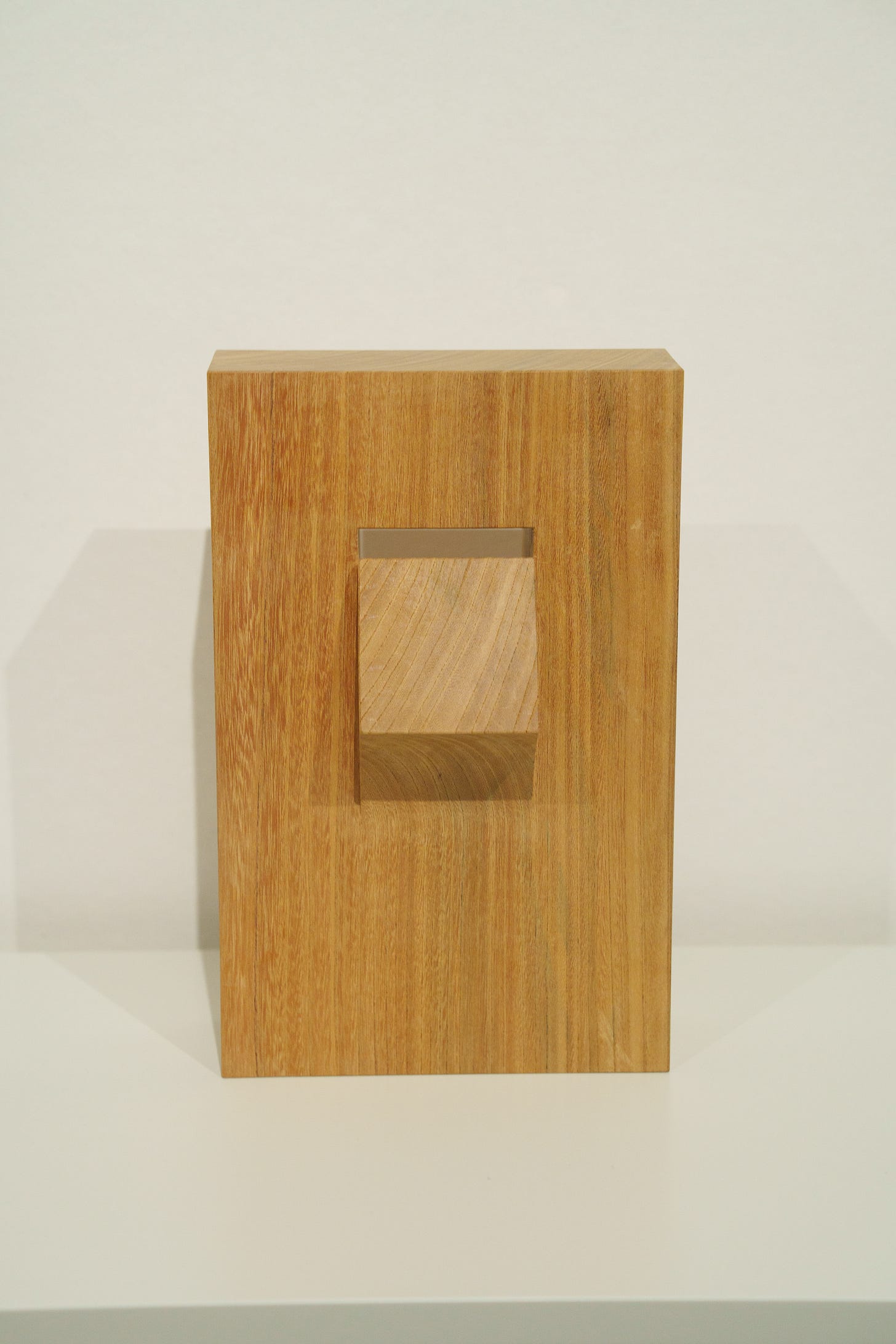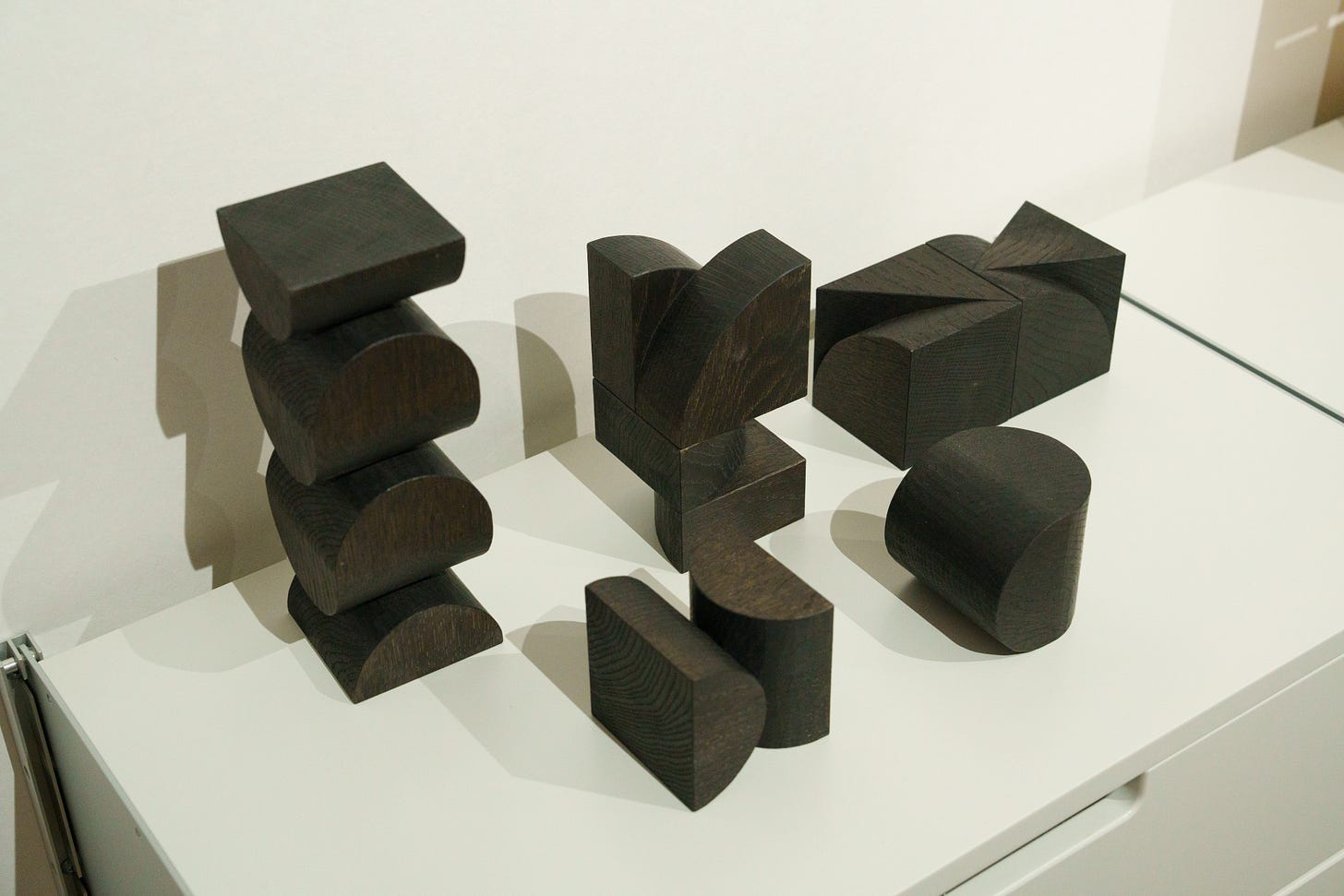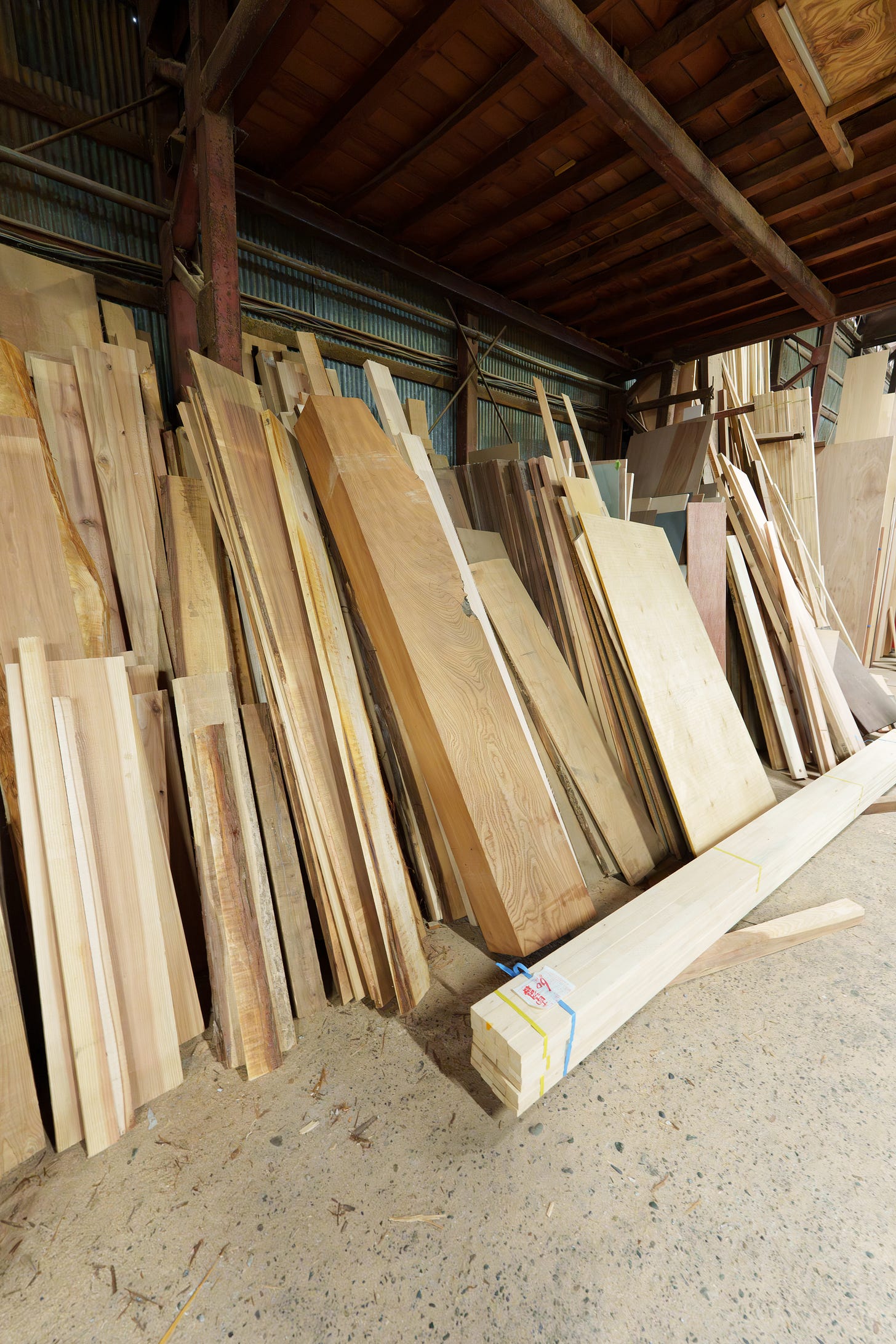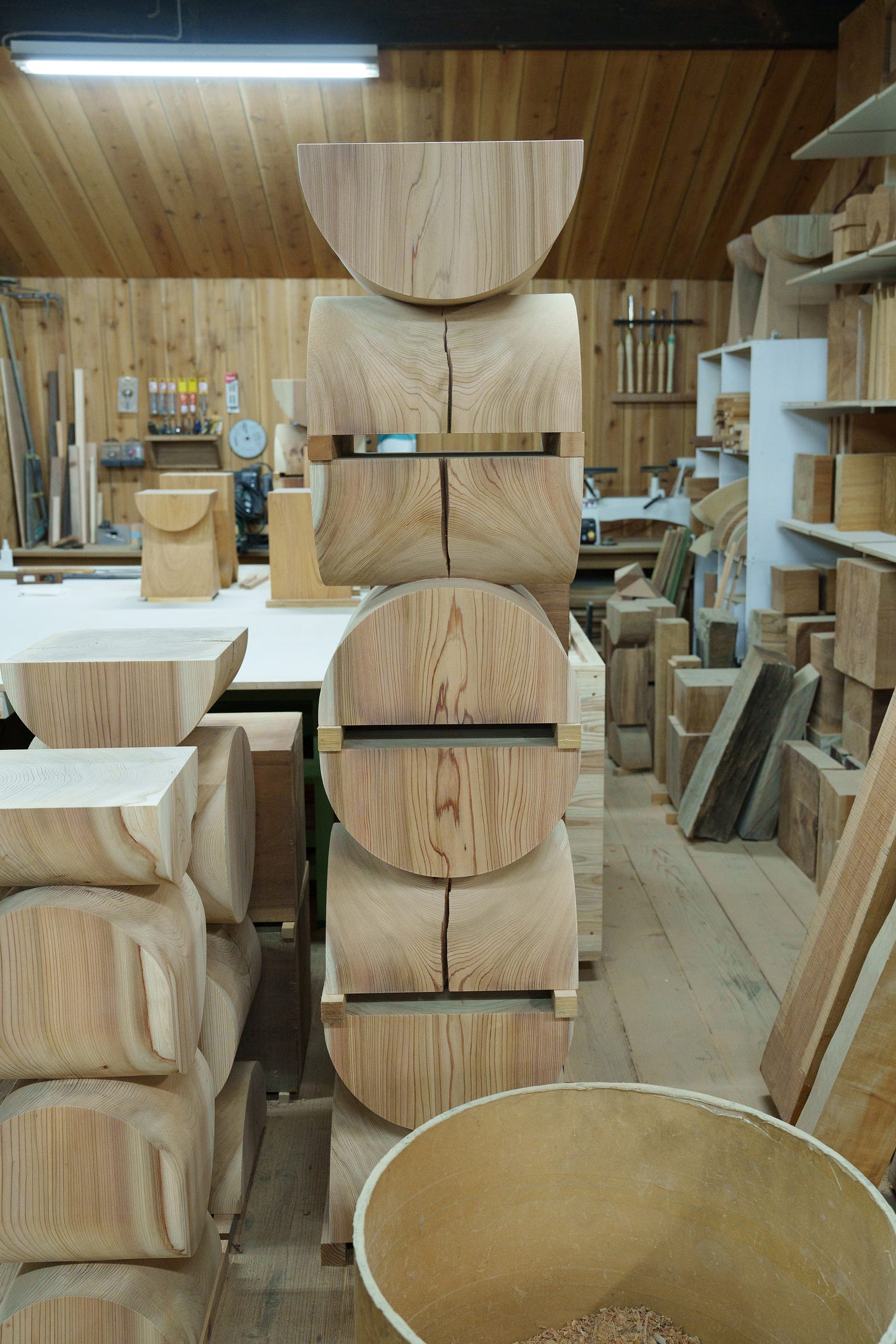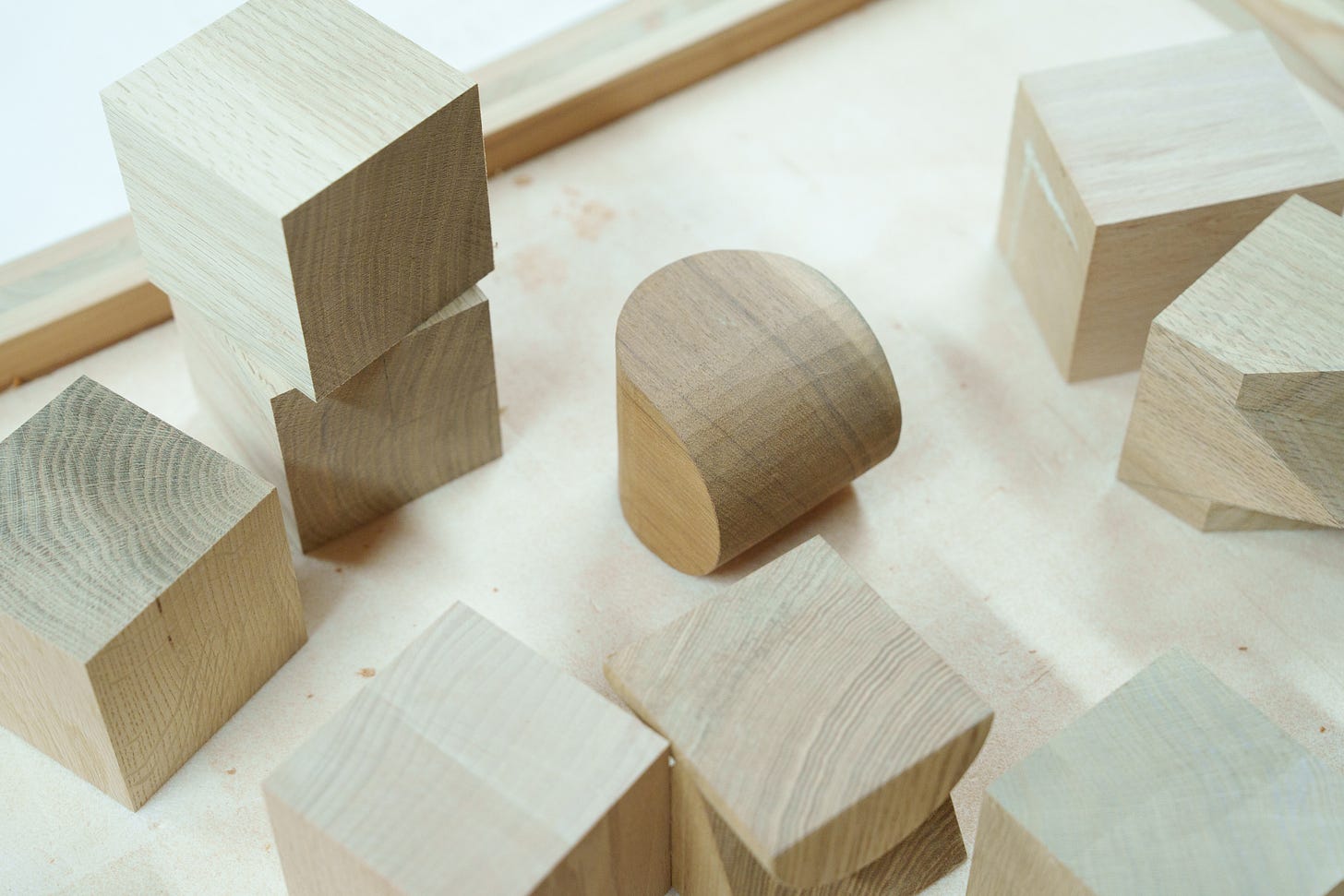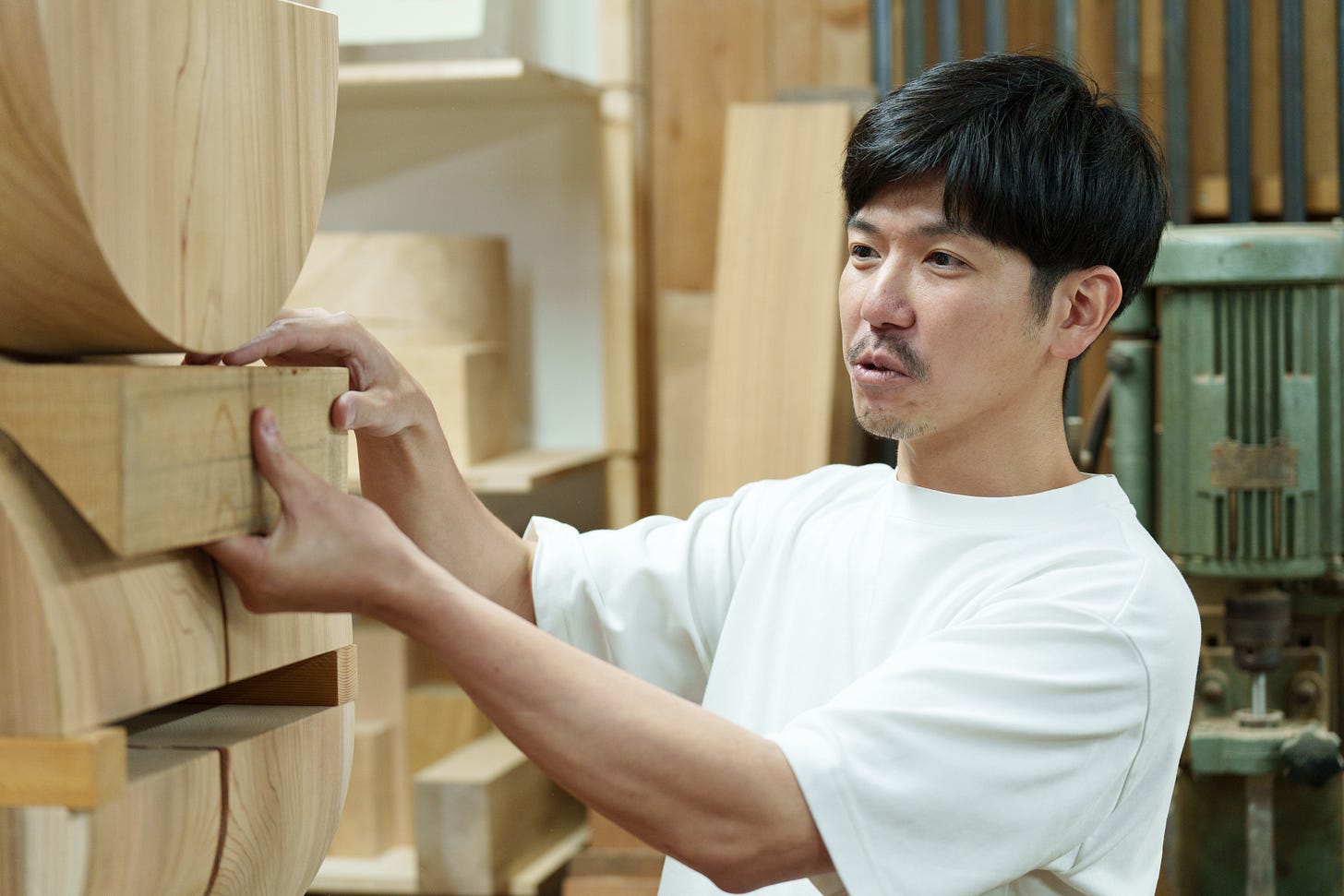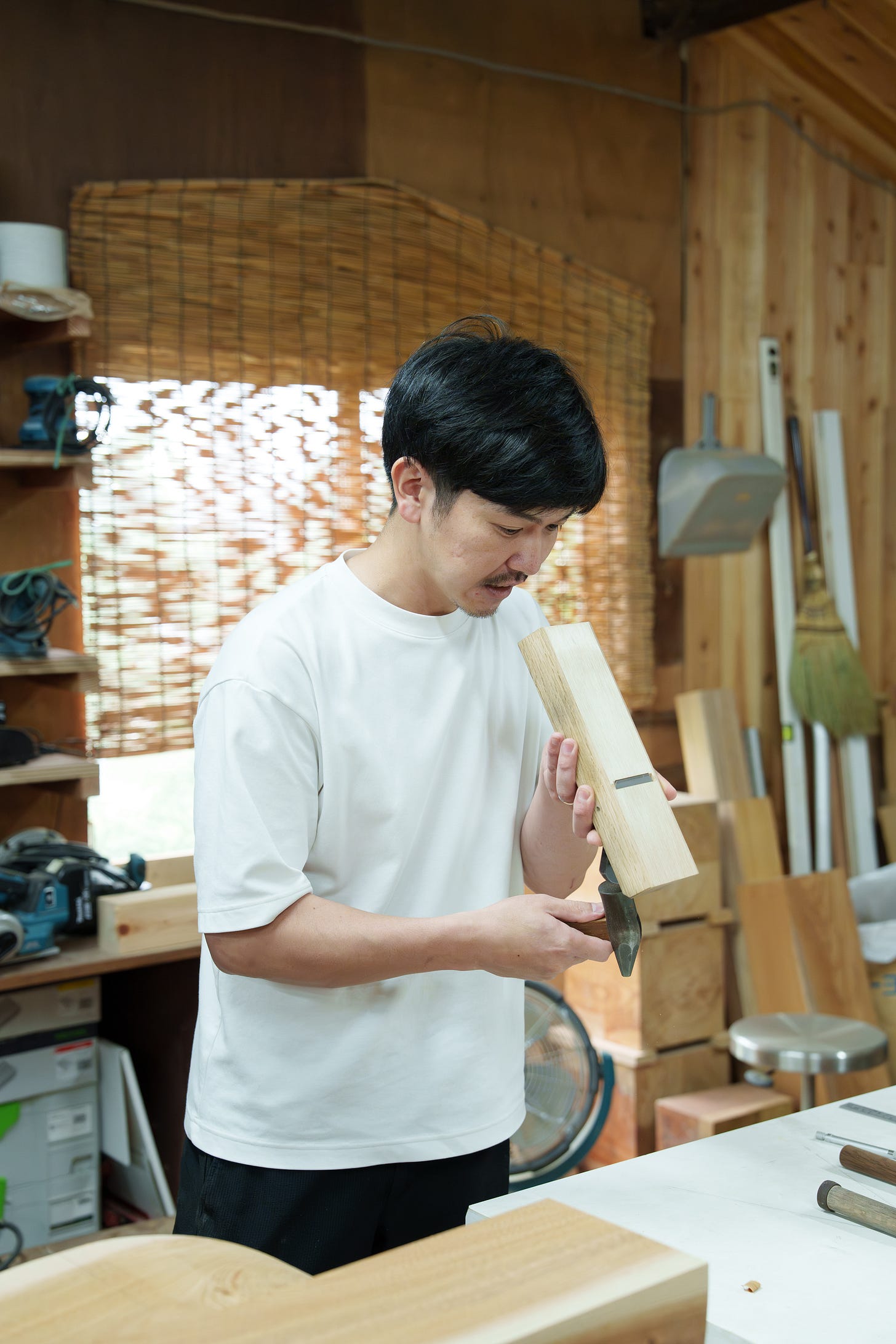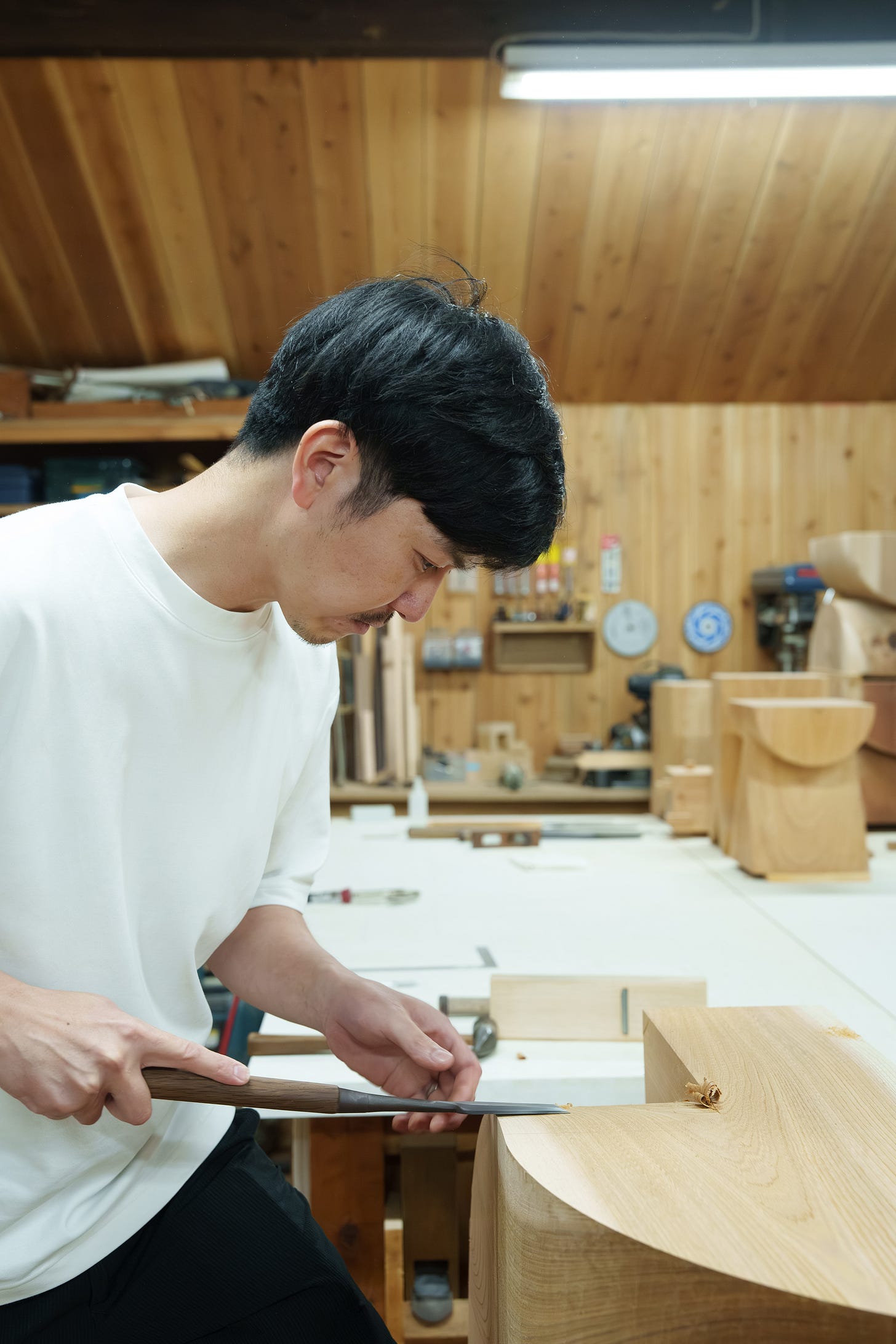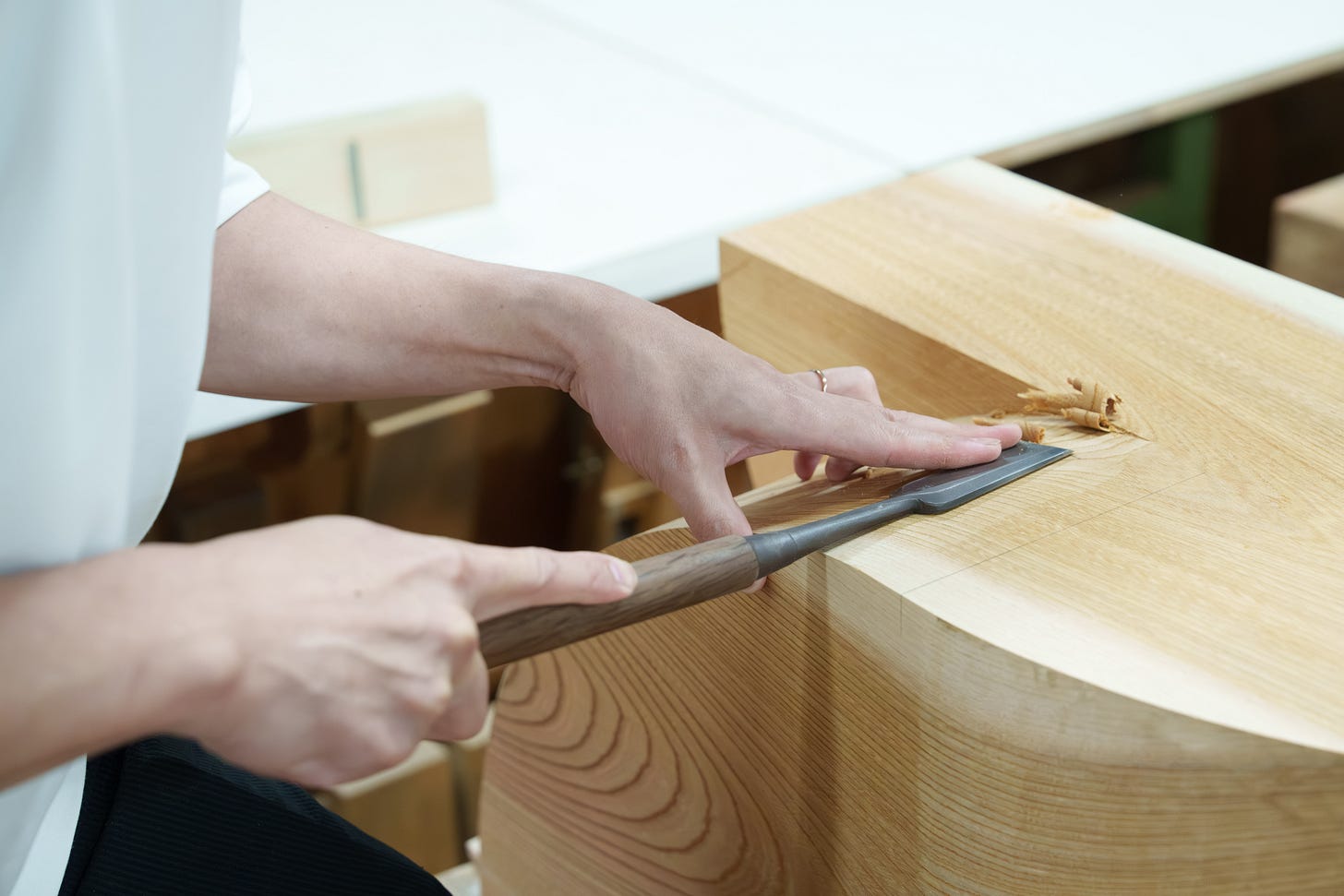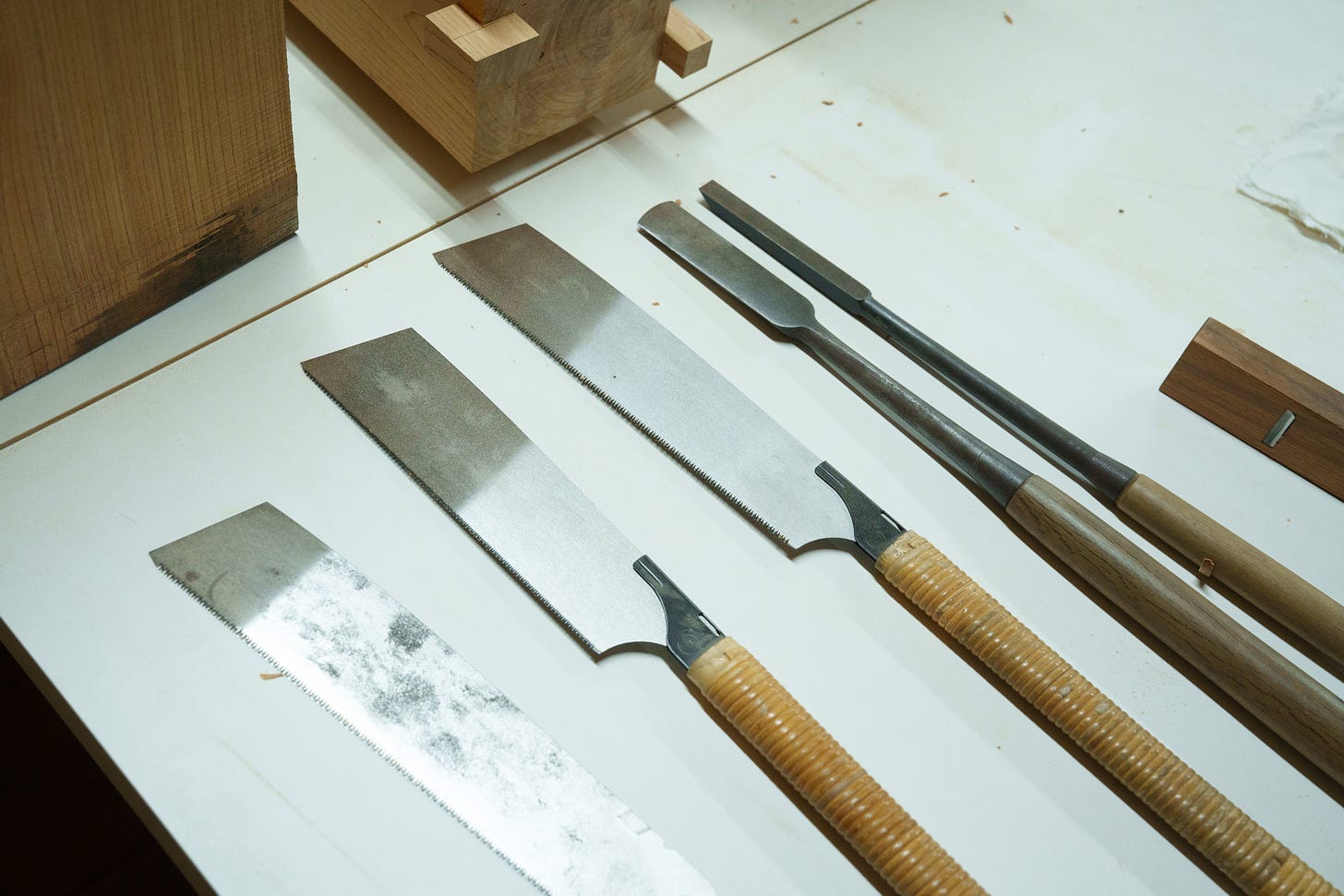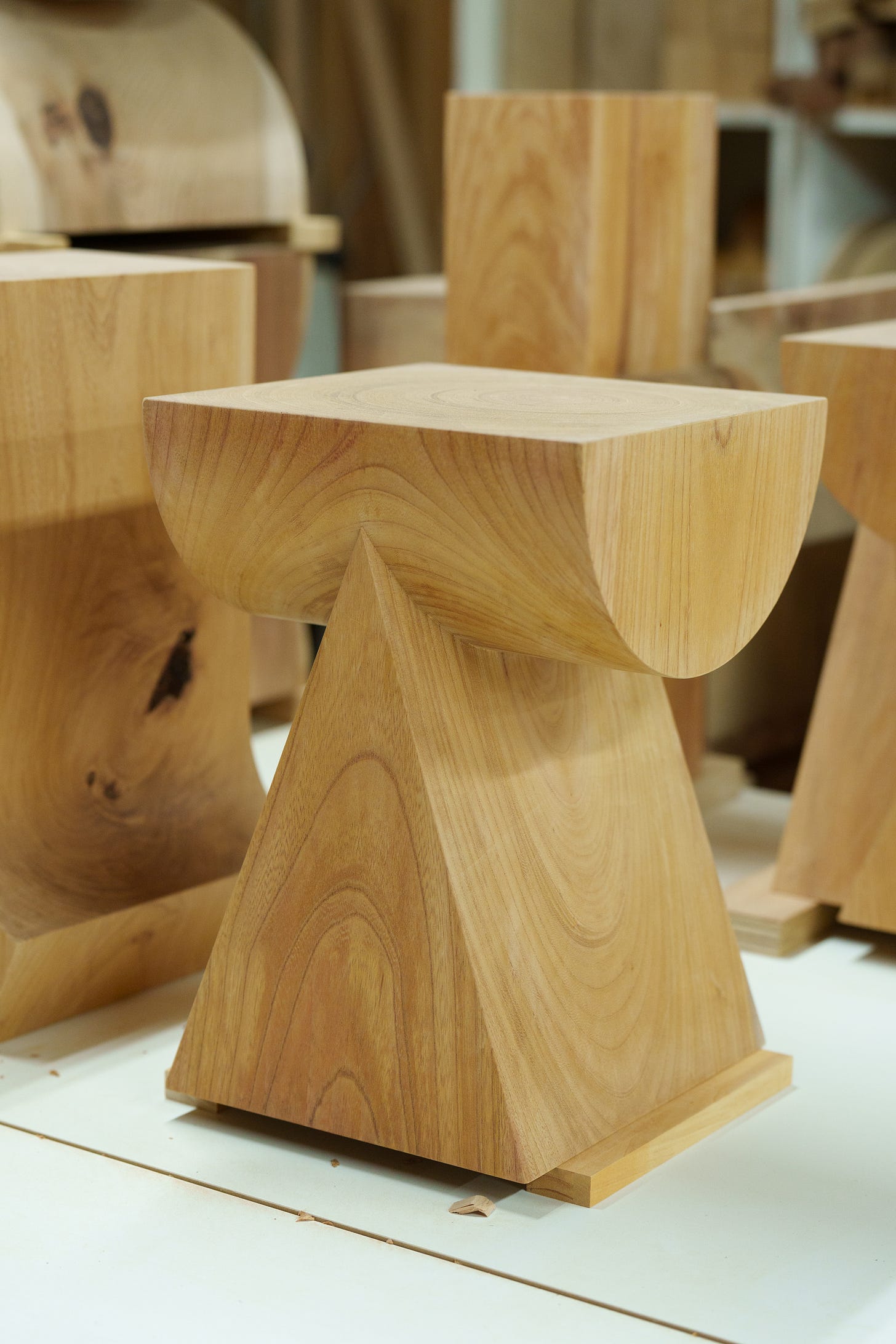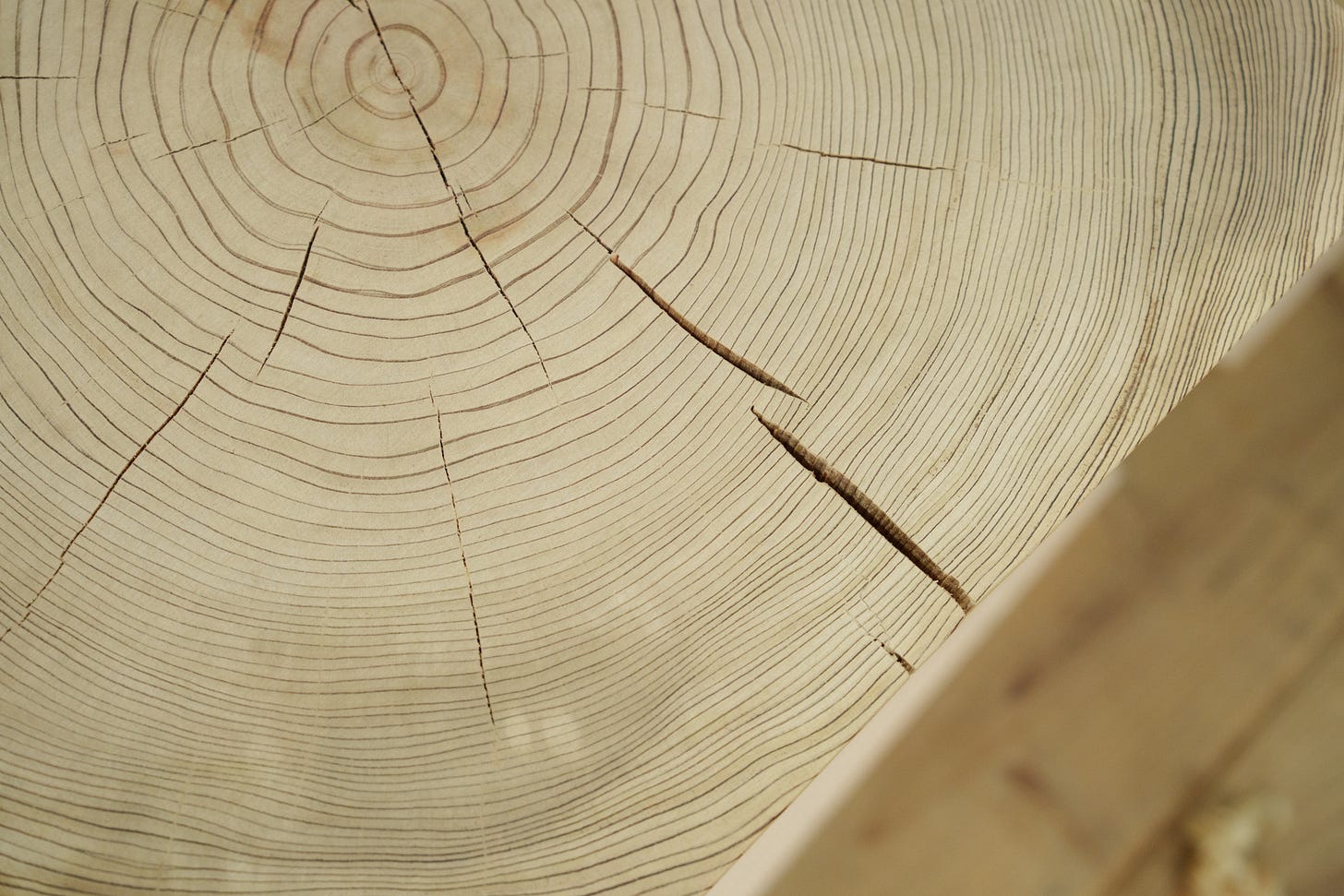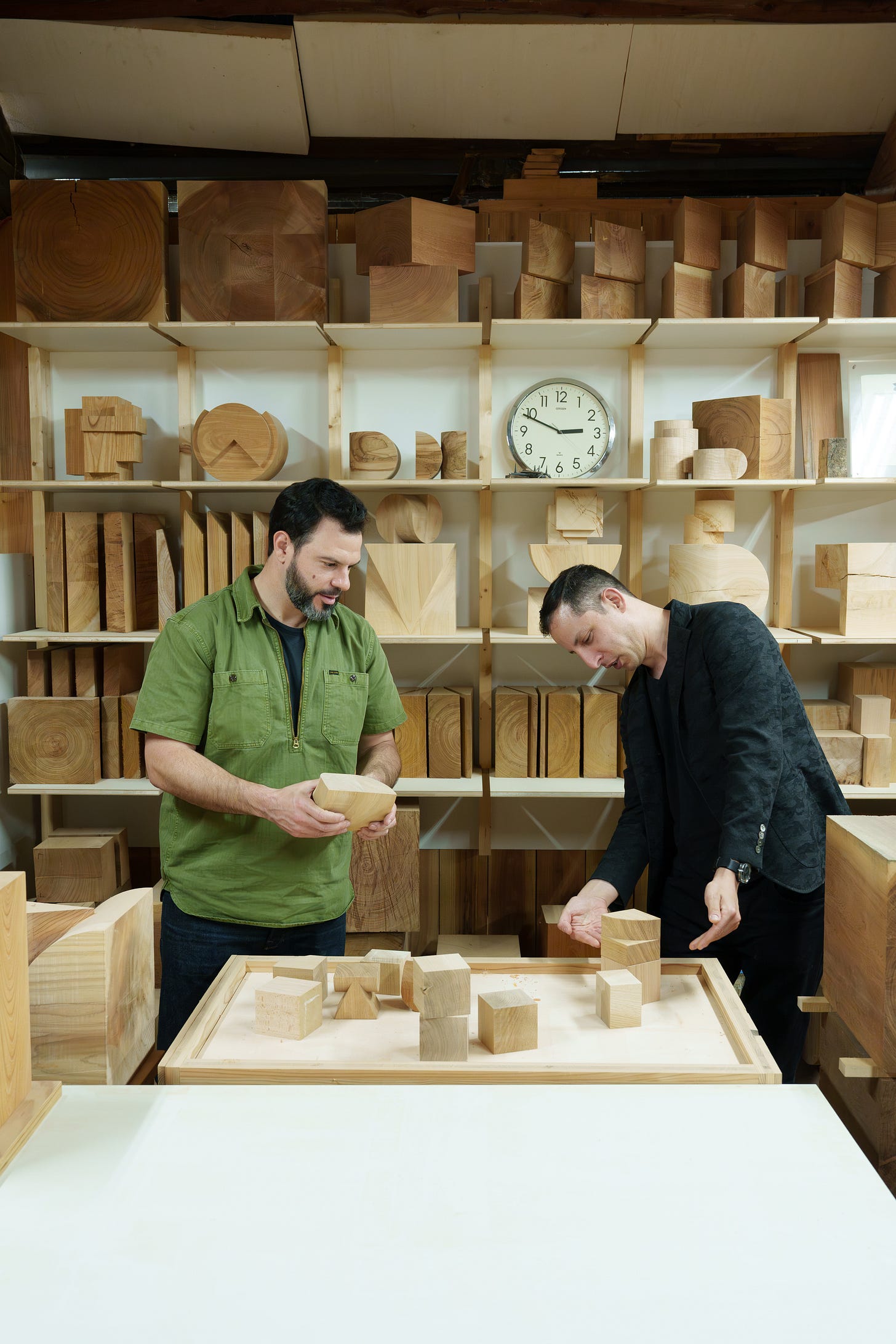Japan’s New Craftspeople: Kojiro Kitada
You cannot help but fall in love with Kojiro Kitada. The 36-year-old craftsman is the authentic manifestation of the new Japanese woodworker. He makes the most beautiful contemporary furniture that looks like the non-figurative sculptures of Wassily Kandinsky, like the famed ‘Stone of Good Fortune,’ a sculpture of a sphere on a cube, in Johann Wolfgang Goethe’s summer house in Weimar—abstraction and simplicity at their best. I have a special love for wood and found Kitada’s vocabulary particularly compelling, and was not surprised to learn that he studied architecture, because there is a clear architectural thought process behind all of his pieces. But Kitada’s furniture also contains a narrative, personal vision, and expression of national identity, embodying the Japanese ethos. The harmonious compositions and geometrical forms, the spiritual perfection, capture a sense of timelessness, along with the quality of the work, which gives his pieces permanence. They are so adorable that you want to take one home with you.
We met Kitada at a local sushi restaurant in the tiny town of Taishi in Osaka Prefecture, overlooking the Katsuragi Mountains, where he lives and works. After lunch, we went to visit the home, which he shares with his architect wife and two adorable daughters. He built this wooden house for his family himself, as before Kitada began making furniture, he had worked alongside carpenters on wooden architecture, building and restoring shrines and temples. It is where he trained to be a Miyadaiku, temple carpenter, a skill that he applies today to his furniture carving the wood by hand without the use of glue or nails. Kitada is merging traditional handcraftsmanship methods with contemporary forms, values, and narratives, while always retaining a strong Japanese identity. And this is at the core of the greatness and refinement of his work. He is a modernist who admires the work of Italian industrial designer Enzo Mari, for the austere expression in industrial design.
Kitada’s workshop is situated in a large sawmill, which he shares with other woodworkers. His section within the large space is divided into a storage area and the workshop, where he creates the furniture. Here, seeing him at work, carving and chiseling the wood with his sharp tools, and listening to his story, everything comes together—the philosophical and the practical. His pieces are mathematical, based on precise proportions and measurements, but they also have another side, as they capture the wildness of the natural properties of the wood. To him, the cracks, the holes, the grains, are central components to constructing his personal vocabulary, according to the Japanese concept and aesthetics of the Wabi-sabi, where the beauty of nature is admired for its imperfection, and for celebrating the cycles of nature. Kitada seeks to preserve nature as much as possible and to give each piece its own individual identity. He carves his furniture from single blocks of local wood, and even when they look as if they are made of two or three pieces, they are not. Because each reflects the uniqueness of the wood, no two are the same. Every piece of wood has a specific personality, he told me, and it has to be preserved and expressed in the furniture.
He drives to the South, where cedar is grown, and buys the wood in the original form of logs. He then cuts the wood into blocks and places them in storage for a process of natural drying. His storage looks like an art installation, with blocks and blocks of wood, all cut to perfection with the special, enticing fragrance of cedar. They are waiting to become pieces of furniture—a table, a stool—as Kitada lets the wood speak for itself.
Photography by © Takuro Kawamoto.






